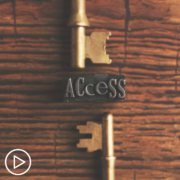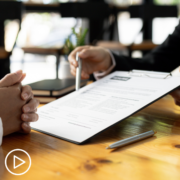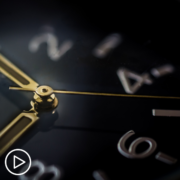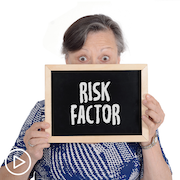What CAR T Research Is Ongoing to Improve Treatment Response?
What CAR T Research Is Ongoing to Improve Treatment Response? from Patient Empowerment Network on Vimeo.
How can CAR T treatment response be improved with research? Expert Dr. Krina Patel from The University of Texas MD Anderson Cancer Center discusses the CARTITUDE, KARMMA-9, and LEGEND studies and proactive patient advice about bispecific therapy and CAR T.
[ACT[IVATION TIP
“…before you start bispecific therapy, talk to your doctor about CAR T. And the reason I say that is that when you get a bispecific therapy, and currently that is not a fixed duration therapy, it is a continuous therapy. So patients are on it until they relapse. And the problem is that once you relapse on that T-cell therapy, your risk of losing BCMA, losing the antigen is much higher. There are mutations that we’re seeing that most patients get.”
Download Guide | Descargar Guía
See More from [ACT]IVATED CAR T
Related Resources:

What Is the Impact of CAR T-Cell Therapy Access Barriers on Patients? |

|

CAR T-Cell Therapy Patient Eligibility | What Patients Should Know |
Transcript:
Lisa Hatfield:
So, Dr. Patel, given the risk of relapse following initial CAR T therapy, what approaches are being investigated to enhance the persistence and durability of CAR T-cell responses in patients? I know there are a lot of theories out there saying things like antigen loss might be an issue, the loss of the target BCMA, T-cell exhaustion, the environment of the bone marrow, what of those theories are being investigated or looked at?
Dr. Krina Patel:
Yeah, I think without causing too many issues with why we think CAR T is so great, where it’s a one-and-done, right? That gives people this wonderful time off. In the relapsed/refractory setting, I think our goal is can we use CAR T to cure, right? That is the ultimate question. And, again, with cilta-cel (ciltacabtagene autoleucel) [Carvykti], with the original data from the LEGEND study, which was the original study in China, those patients had a little bit less therapy than CARTITUDE. However, there are about 15 percent of patients that are six years out from their CAR T still in remission, right?
And so that gives us a little bit of hope that maybe we’ll have a small tail and a small number of patients that are cured from our current CAR T approaches. But the question is, how do we now increase that tail and make it more like lymphoma? And then hopefully, 90, 100 percent of patients eventually, how can we, how can you get everyone cured? And so I think it comes down to myeloma is not the same for everybody, right? So you have our high-risk patients versus our standard-risk patients. And I think the strategies are going to be different for those two patient populations.
They already are in the way we treat patients with even induction therapy and maintenance and consolidation. We tend to be much more aggressive with folks who have high-risk disease versus those who don’t. And so, I think the biggest studies right now that are looking at this are really the combination studies. And so looking at CAR T followed by some type of maintenance, but fixed duration maintenance. So CARTITUDE 5 and 6 and KarMMa-9, these are all the studies of the BCMA CAR Ts in frontline. All of them will have maintenance afterwards, but it seems to be that they’re going to be two years of LEN maintenance and that’s it, nothing after that.
So LEN, lenalidomide (Revlimid), we know that it activates T cells. It activates other immune cells like NK cells in the body, even B cells. And so when you get cytokine release syndrome from the CAR T, you’re already making more of these immune cells and activating them. And now you’re going to have lenalidomide in there to kind of keep that going, right? And so that could help with this, not persistence of the CAR T itself, but persistence of better immune cells that can actually keep your myeloma down, right? So I think that’s one way.
The other way is some of the new therapies like CELMoDs. So these are sort of the newer version of lenalidomide and pomalidomide. They tend to have more immune effect than the other two drugs. So there’s studies looking at other CAR Ts, so a different target, right? So we talked about antigen loss. If you’ve lost BCMA, then what do we do?
Well, there’s other targets like GPRC5D. So a couple of the studies are looking at GPRC5D-CAR-T plus mezigdomide, which is one of the CELMoDs, or another arm is iberdomide, which is the other CELMoD, and looking at different doses without causing too many side effects, but still helping the T cell keep going, all kinds of things going on there. So those are some interesting studies.
And one of the cohorts, it’s actually using a GPRC5D-CAR-T with a BCMA bispecific after, that’s combinations. So now you’re targeting two different antigens and you’re using T cells in two different ways, right? And again, it’s fixed duration so that it’s not forever, but after a certain period, hopefully, we fix the bone marrow and we’ve killed enough myeloma that hopefully it won’t come back.
And so I think all of those are different strategies for the T-cell exhaustion to help with that, to hopefully keep from getting antigen loss, or if someone does have antigen loss, figuring out a way to go around it. And then the microenvironment I think is the biggest one, is how do we find cytokines and other things that can give us a bone marrow microenvironment that makes it really inhospitable for that myeloma to ever come back again.
So there are early Phase I studies looking at some of this, but I think down the line, that’s really what it will be, that once people go into their stringent CRs, MRD undetectable, now what can we do to keep that bone marrow from ever letting it grow again? And I think those are some interesting studies in the future.
Lisa Hatfield:
Okay. Thank you. So some patients are asked questions about the sequencing, and you’d mentioned different therapies. So I’ll ask this really quickly as follow-up, do you have any recommended or are there recommended sequencing of these different therapies like CAR T, then bispecifics, then CELMoDs, not all of them are FDA-approved at this point, but what are your thoughts on sequencing of those therapies?
Dr. Krina Patel:
So my activation tip here is that before you start bispecific therapy, talk to your doctor about CAR T. And the reason I say that is that when you get a bispecific therapy, and currently that is not a fixed duration therapy, it is a continuous therapy. So patients are on it until they relapse. And the problem is that once you relapse on that T-cell therapy, your risk of losing BCMA, losing the antigen is much higher. There are mutations that we’re seeing that most patients get.
So that means the next time we try to use a different BCMA therapy, there’s a big chance it’s not going to work. And we have small studies that show that, that people who get a bispecific, and then we try to go to CAR T for both CAR Ts that the response rates go down and the progression-free survival. So the months that patients get without, needing other therapy goes down for cilta-cel (ciltacabtagene autoleucel) [Carvykti], 33 months in CARTITUDE. It goes down to six months in CARTITUDE-2 where they did CAR T after prior BCMA therapy. That’s a huge drop.
In ide-cel, the real-world data, we saw that after bispecifics, you only get 2.8 months. If you get a CAR T, even though the response rates were still 70, 80 percent, it obviously there are clones that that BCMA isn’t there anymore that we can’t kill. And then it just grows back, right? The other way around, we actually see still a really good response because CAR T is a one-and-done, most of the time, you’re not going to lose BCMA.
So that let’s say a few years later, the myeloma was coming back. It usually has the same BCMA on there. So now I can use a bispecific. And yes, the PFS is still shorter than what you would see if you never had any BCMA therapy. It’s still in the realm of, almost a year, PFS though. So it’s much closer to what we see in the real world for bispecifics than the other way around for CAR T, it’s much, much lower. So we try to do CAR T first then bispecific, if possible. The other part is a T cell. So if you try to make T cells right after someone’s coming off of a bispecific, it is really hard to get T cells that are functional that then we can actually put a CAR into and make it work. So again, why, doing a CAR T first, and then a bispecific makes the most sense for the majority of our patients if they can do it that way.
Share Your Feedback
Create your own user feedback survey









